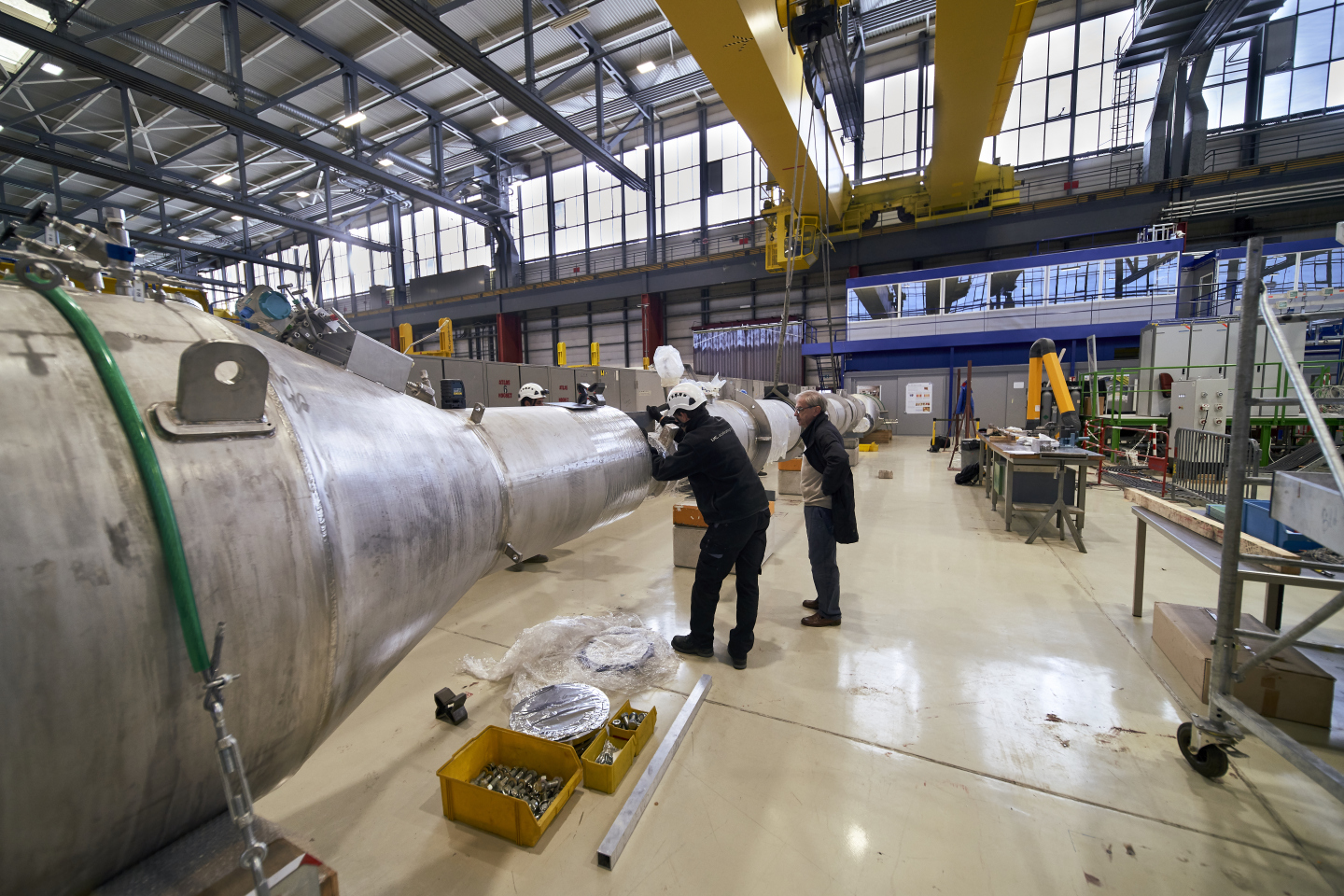CERN is taking part in a testing-phase project, called ARIA, for the construction of a 350-metre-tall distillation tower that will be used to purify liquid argon (LAr) for scientific and, in a second phase, medical and possibly other uses.
The full tower, composed of 28 identical modules plus a top (condenser) and a bottom (re-boiler) special module, will be installed in a disused shaft of a coal mine in Sardinia, Italy. The project was initiated to supply the purest argon possible to the international dark matter experiment DarkSide at INFN’s Gran Sasso National Laboratories.
DarkSide is a dual-phase liquid-argon time-projection chamber that aims to detect the possible passage of a dark matter particle in the form of a Weakly Interacting Massive Particle (WIMP) when it hits an argon nucleus contained in the detector. Since this WIMP-nucleus interaction is predicted to be extremely rare, the detector must contain only the purest argon possible, so as not to accidentally produce a spurious signal.
ARIA has been designed to produce this extra-pure argon. Atmospheric argon contains many “impurities” such as water, oxygen, krypton and argon-39, an isotope of argon, which are all sources of unwanted signals. Argon from underground sources is already depleted from the argon-39 isotope by a factor of 1400, but this is still not enough for dark-matter research. ARIA is designed to purify underground argon from argon-39 by a further factor of 10 per pass, leaving only the radio-stable argon-40 isotope, by harnessing a very simple physical principle: the two isotopes have different volatility, which means that argon-39 will vaporise faster than argon-40 because it has one less nucleon in its nucleus.
The separation is done via a standard distillation process. First, the Argon is injected at roughly two thirds of the column in gaseous state. The gas reaches the top of the column where it is condensed. The liquid starts flowing to the bottom of the column where it enters the reboiler and is transformed again into gas. At the bottom, a small fraction of an argon-40-enriched flow is extracted as product of the distillation, while at the top a small fraction of argon-39-enriched flow is removed.
Although the process is much like standard distillation, there are certain differences. One of them is the spectacular size of the column – with its 350 metres, it is unique in the world. Furthermore, in order to enhance the isotope separation power, ARIA is filled with a special packing that makes the column equivalent to a series of about 3000 single stage distillation processes. Also, less then 1 part per thousand of the total flow in the column is extracted as product, which means that the colum is working very close to its total reflux condition.
The size of the column and its working conditions are real technological challenges and the realization of the column requires several quality checks performed on each module before and during the installation.
After construction, the modules were brought to CERN, where, one by one, they were leak tested by the Vacuum, Surfaces and Coatings (VSC) group of the Technology Department. On Friday, 24 November, the top and bottom modules plus one standard module were brought to Building 180 and lined up to precisely check their alignment, geometry and interconnection interfaces, prior to welding. After this, the three modules will be taken to Sardinia, where they will be assembled vertically, initially above ground, to start operating and to test their functionality before assembling the complete column in the mine shaft.
ARIA is expected to be fully assembled by the end of 2018 and to start operations in 2019. Once the technique is proven, many other air components, such as oxygen-18, nitrogen-15 and carbon-13, could be distilled by applying the same process. These elements have important applications in many fields of research and technology, including diagnostic techniques for the detection of cancer.


